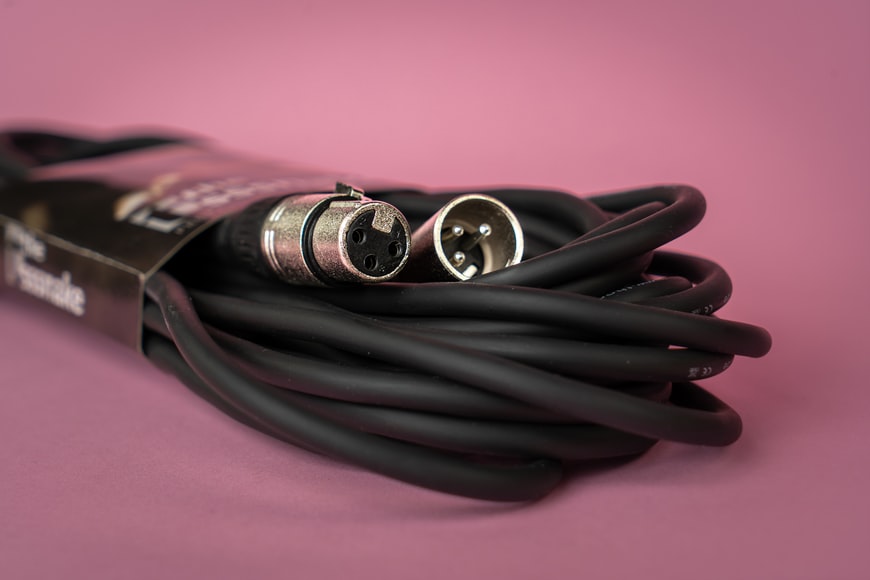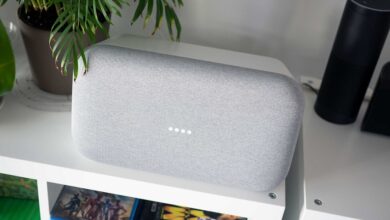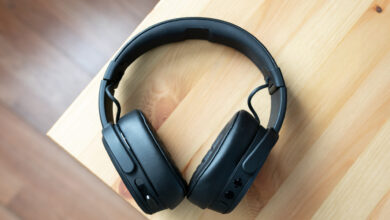
Coaxial speaker cable has been the standard technique for connecting audio sources to sound systems for decades. Still, many consumers are hesitant to use it because they need to understand how it operates or how to use it effectively. Coaxial cable, commonly known as coaxial speaker cable, can connect your audio components in several ways.
Consequently, it is a highly adaptable solution to the difficulties provided by your home theatre or music-listening setup. In addition to their widespread use in consumer apps, speaker cables are widely employed in business settings such as movie theatres and sports stadiums.
Here are some FAQs and answers about coaxial and axial speaker cables, as well as some helpful hints for selecting the correct one for your particular needs and circumstances.
Coaxial Speaker Cable
A coaxial speaker cable is an electrical cable containing an inner conductor surrounded by a dielectric insulation layer, which is subsequently surrounded by a shield. The shield protects the inner conductor from electromagnetic interference. Coax speaker cable is frequently used in audio apps because it offers superior sound quality compared to other wires. When selecting an oaxial speaker cable, there are several factors to consider. First, you must confirm that the cable is suitable for the intended purpose.
It would be beneficial if you ensured that the wire gauge was appropriate for the length of the run. For example, use a 14-gauge cable so the power stays high and good sound is produced. Critical because any evident fault in the shielding could let external interference into the signal lines of your system. To avoid needing to replace it, you should ensure that the gauge appropriately handles as much power as possible without electrical resistance or heat difficulties.
Purpose of Coaxial cables
Coaxial Cable used for: Coax speaker cables are a type of electrical cable used to connect audio components. These cables eliminate interference and optimize signal strength to get most out of your coaxial speaker cable. The purpose of an axial speaker cable is to transmit an audio signal from one component to another. The besr Coaxial cable for audio have two components: the inner conductor and the outside shielding. The signal is sent through the inner conductor, commonly made of copper or silver. The outside shielding aids in interference protection for the inner conductor.
Shielded coaxial speaker cable offers improved protection from external noise sources. And electromagnetic interference, as this external noise is blocked by their outer shield. Unshielded coaxial cables offer less noise protection than shielded cables. However, their improved adaptability makes them perfect for particular apps, for instance, in confined spaces or while running many wires side by side. Both shielded and unshielded coax speaker cables must be terminated with the correct connectors for your system.
How Does it Differ from Digital Cables?
Digital coax speaker cables are dielectric with a solid central conductor. An electromagnetic field sends the signal through the dielectric material. In contrast, employ a stranded center conductor in addition to a dielectric substance, including air. The signal is sent via sound waves across the air. So, what are the benefits of using Coaxial speaker cable over digital coaxial cable? A coaxial speaker cable is less expensive, for starters. Additionally, it is more flexible, making it easier to deal with.
In addition, signal transfer is more efficient because no conversion from digital to analog is required. For digital audio to play through a speaker connected to a receiver, it must first be converted into electrical impulses that the receiver can read. The speakers must then turn these impulses back into sound. Using a coaxial speaker cable eliminates the need for this conversion. In contrast to digital lines, which require amplification at both ends (receiver and amplifier), a coaxial speaker cable requires only one amplifier — at one end of the connection — making it significantly more convenient than its alternatives.
The types of connectors used for coax cables
Well, there are two types of connectors used for speaker coaxial. F-type and BNC. F-type connectors are the most common and can be found on cable TV lines. BNC connectors are used in audio and video apps for professionals. What exactly is a twin cable? A double coaxial speaker cable typically consists of an F-type connector and an RCA connector at one end. It is not always the case, however. What distinctions exist between RG6 and RG59? RG6 is a more durable variant of RG59, designed to carry greater power while maintaining the same weight.
Similarly to RG59, RG6 is available with three degrees of insulation and various colors, including grey, brown, green, and black, to reduce the strain it places on your power sources. RG6 has a smaller diameter than RG59, so you’ll need to use less material when putting cables around your walls or ceiling if you want them to seem neat. And the difference in size between RG6 and RG59 makes RG6 ideal for installation behind drywall. If you choose RG6 versus RG59, check your equipment can manage the greater power requirements.
Types of Coaxial Cables
There are three distinct varieties of coaxial speaker cables. The RG-59, RG-6, and RG-11 cables. Each form has advantages and disadvantages. Therefore, it’s crucial to select the appropriate one for your needs. The most prevalent type of coaxial cable is RG-59. It is inexpensive and straightforward but needs to provide the highest signal quality. RG-6 is superior to RG-59 regarding signal quality. It is also more resilient, making it an excellent option for outdoor apps.
However, this cable type is more expensive and complicated to work with than RG-59. RG-11 is the highest-quality coaxial cable. The coaxial speaker cable offers the highest signal quality and is the most resilient option. It’s also tough to deal with, so it’s only worthwhile if you’re certain you need a higher-quality cable or installing something outdoors where the weather could be an issue. RG-59 is typically the best option for residential use.
Flexible
A dielectric is a flexible electrical insulator used to prevent electrical shock. Coaxial speaker cable, commonly known as twin-lead, consists of two conductors separated by dielectric material. Typically, the dielectric material is insulation made of plastic or rubber. Numerous apps use coaxial cable, including audio, video, and computer networking. The hot conductor wire must be connected to the amplifier’s positive terminal when using coaxial speaker cables.
And the cold conductor wire is connected to the amplifier’s negative terminal. Keep these connections straight for the best sound quality when connecting your amplifier’s cables to your speaker wires. Consult the handbook if you need clarification about which connector belongs where. Numerous modern amplifiers feature color-coded connectors, making it simple to identify which wire goes where. Finally, ensure that the other end of your speakers is connected to the amp’s speaker out or out terminals.
Semirigid
Semirigid speaker Coaxial cable speakers can be used in the majority of configurations. One of the greatest advantages of semirigid coax is that it is typically less expensive than other varieties. They are also more manageable and need less setup time, making them ideal for individuals on a budget or in a hurry.
ALSO SEE: Lenovo IdeaPad S340-15
There are some downsides as well. For example, the sound quality is slightly less exact than with rigid coaxial cable, and its use is restricted to specialized apps. Its advantages and disadvantages, the tools required for installation, and common installation issues. Coaxial cables consist of an inner conductor surrounded by insulation and braided wire, with an outer conductor as the cable’s covering. The braided wire layer must be removed and replaced with flexible insulation to generate semirigid coax cables.
Triaxial
How does coax cable appear? Typically, a Triaxial coaxial cable for speakers is used in audio and video apps. Triaxial cables come in 75-ohm, 110-ohm, and 300-ohm varieties. In the United States, the most prevalent coaxial cable is 75-ohm. These wires have a frequency range of 20 Hz to 200 kHz. To expand bandwidth. A thicker gauge and extra shielding with an additional foil wrap around the wire will be necessary. If lengths reach 30 feet, a thicker gauge may also be required. The size, frequency ranges, and quality of the shield. When selecting a coaxial speaker wire, insulation thickness should also be addressed.
Dielectric insulator
Numerous dielectric insulators are available on the market, but foam is the most prevalent. Foam is an excellent option because it is lightweight and easy to manipulate. Foam is very inexpensive and readily available at any hardware shop. This type of speaker wire is so widely used that its advantages significantly exceed its limitations. Over time, it tends to absorb water, contributing to its deterioration.






